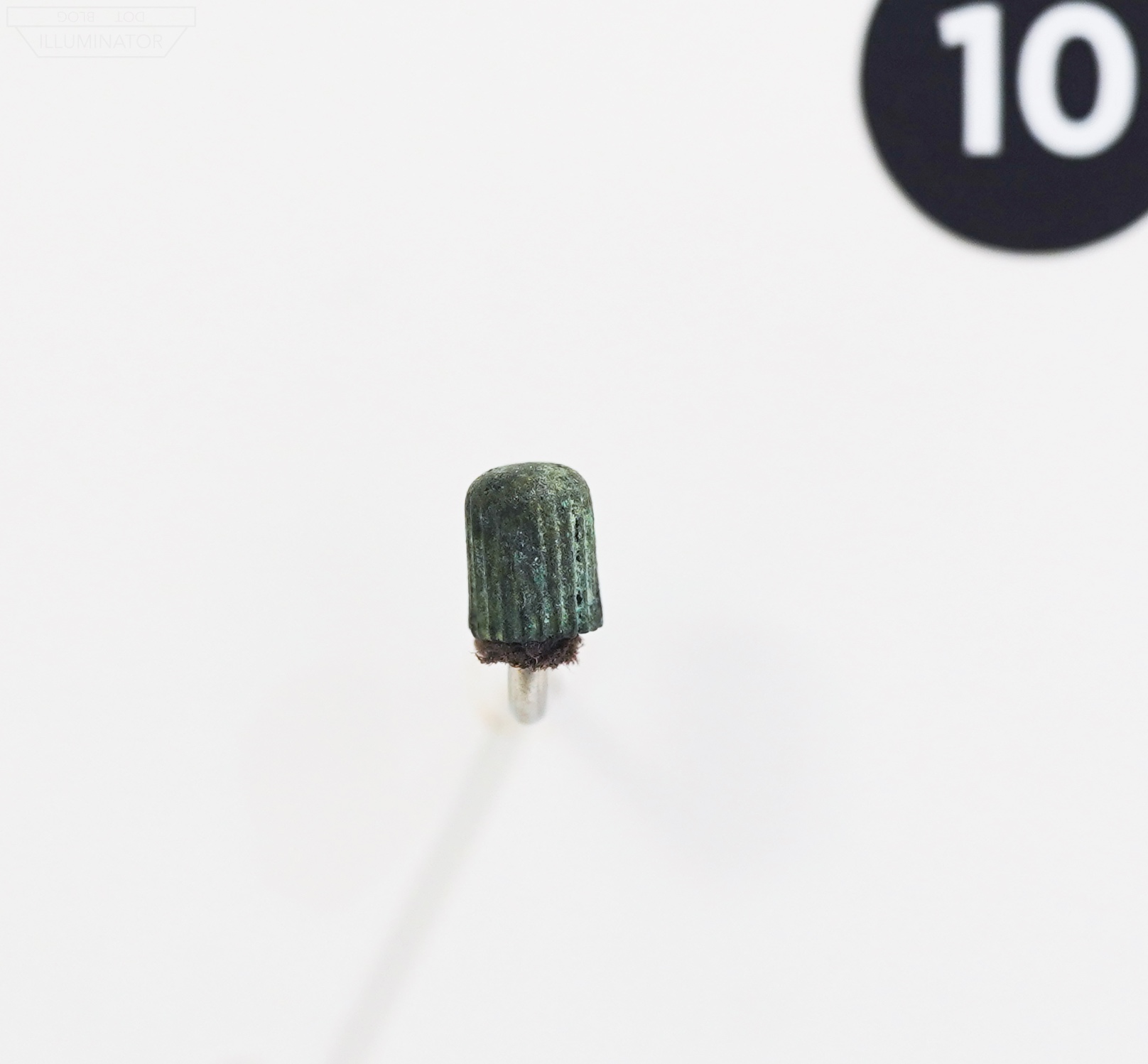

On the top floor of a museum in Canada’s capital rests the world’s 2nd largest collection of Franklin relics on public display. Set amidst waves of schoolchildren encountering stuffed seals and flying plastic narwhals, a small recess in the wall holds twenty relics from the lost Franklin Expedition.
Originating neither from the shipwrecks nor from the Victorian searches for Franklin, these relics come from the (shockingly recent) 1990s rediscovery of the “Boat Place” and other Erebus Bay sites. The principal searcher who made these rediscoveries was Barry Ranford, a high school art teacher from Ontario. Ranford’s find was the subject of a 1994 CBC special report from King William Island, focusing on Ranford (and his collaborator John Harrington) but also featuring commentary from Anne Keenleyside, Dave Woodman, and Margaret Atwood. These relics at the Museum of Nature were in Ranford’s possession when he died suddenly just two years later, in September of 1996. In an obituary for Polar Record, Ann Savours closed by lamenting that, “...his book on the search for the Franklin expedition and about his own discoveries will not now be published.”
My thanks to Alison Freebairn, Douglas Stenton, Regina Koellner, and Scott Rufolo for assistance in producing this page. The relics are located on the top floor of the museum’s east wing (the Canada Goose Arctic Gallery); tickets to enter cost just under $20 (link). For further information on Franklin searcher Barry Ranford, see the 1994 CBC special (link), or the chapter wholly devoted to Ranford in Russell Potter’s Finding Franklin.
– L.Z. April 27th, 2023.
When available, the “▽” deck prism symbol indicates a larger file can be downloaded by clicking the photograph.

{ ▽ Polar bear in the Canada Goose Arctic Gallery. }

{ ▽ Museum display with Franklin relics (center). }

{ ▽ The Franklin relics. }
{ Museum key to the relics. }

{ NgLj-2:351b }
Museum notes: “Button made of bone, of a design that was common during the first half of the nineteenth century.”

{ ▽ NgLj-2:335 }
Museum notes: “Boat fragment with nail. Piece of wood removed from a boat (likely a small landing craft) that bears a cut copper nail.”

{ ▽ NgLj-2:329 }

{ NgLj-2:329 }
Museum notes: “Bowl of a tobacco pipe whose stem has broken off completely, with traces of white paint still visible. The style of the pipe reflects a form popular in the 1840s and 1850s.”

{ NgLj-2:353 }
Museum notes: “Incomplete tobacco pipe made of kaolin clay, missing most of the shank and part of the bowl.”

{ ▽ NgLj-2:389 }
{ ▽ NgLj-2:389 }
{ NgLj-2:389 }

{ NgLj-2:389 }
Museum notes: “Leather. Strap from a backpack, one end bearing the traces of machine sewing.”
[While it may have come from a backpack, this might have come from almost anything needing a leather strap with machine sewing.]

{ NgLj-2:358 }
Museum notes: “Fragment of the head of a bone toothbrush. The holes once supported boar-hair bristles.”

{ ▽ NgLj-2:359 }
Museum notes: “Antler or horn knife handle that was split in order to remove the blade.”

{ NgLj-2:370 }
Museum notes: “Metal thimble of a design representative of British Royal Navy standard issue during the nineteenth century.”

{ NgLj-2:376 }
Museum notes: “Gilt metal button from the uniform of an officer in the British Royal Navy.”

{ NgLj-2:346 }

{ ▽ NgLj-2:346 }

{ NgLj-2:346 }
Museum notes: “Piece of twill-woven wool, likely from a blanket or blanket cloth, a material often used to protect the hands when parcelling out rope.”

{ NgLj-2:369 }
Museum notes: “Percussion cap. Brass. Metal container that held the explosive material for firing a gun, likely a low-calibre longarm or a pistol. The percussion cap was placed into the [at the] rear end of the gun barrel before firing.”

{ ▽ NgLj-2:395 }
Museum notes: “Knife sheath. Leather. Royal Marine Pattern 1839 bayonet scabbard that has been refashioned to serve as a knife sheath, missing the metal chape that would have been affixed to its bottom end.”

{ NgLj-2:378 }

{ NgLj-2:378 }

{ NgLj-2:378 }

{ NgLj-2:378 }
Museum notes: “Fragment of wood from unknown object with copper rivet still embedded.”

{ ▽ NgLj-2:393 }
Museum notes: “Shoe sole. Leather. Well-used shoe sole with machine-stitched edges.”

{ NgLj-2:364 }
Museum notes: “[Rag] Bolt. Iron. Notched bolt from one of the landing boats carried on the expedition’s ships.”

{ NgLj-2:371 }
Museum notes: “Fragment of copper mesh that served as one of the “lenses” of a pair of snow goggles. The mesh would have been embedded in a leather rim.”

{ NgLj-2:344a,c }

{ NgLj-2:344a,c }

{ NgLj-2:344a,c }
Museum notes: “Tarpaulin fragments. Two pieces of canvas (one with a grommet hole) and a loose grommet. These items are part of a larger cloth that was likely used to cover and protect objects stored on the deck of a vessel.”

{ NgLj-2:363 }

{ NgLj-2:363 }
Museum notes: “A fragment from a storage can made of iron and coated with a thin layer of tin.”

{ NgLj-2:380 }
Museum notes: “Fish hook. Iron. Complete fish hook with round eye.”

{ ▽ NgLj-2:328a,b }

{ ▽ NgLj-2:328a,b }

{ ▽ NgLj-2:328a,b }
Museum notes: “Chock fragments. Oak. Two fragments of a chock used for immobilizing sledges. Sledges were used to transport small landing craft across land.”
The End.
– L.Z. April 27th, 2023.
* * *
{ Photograph by Alison Freebairn. }




